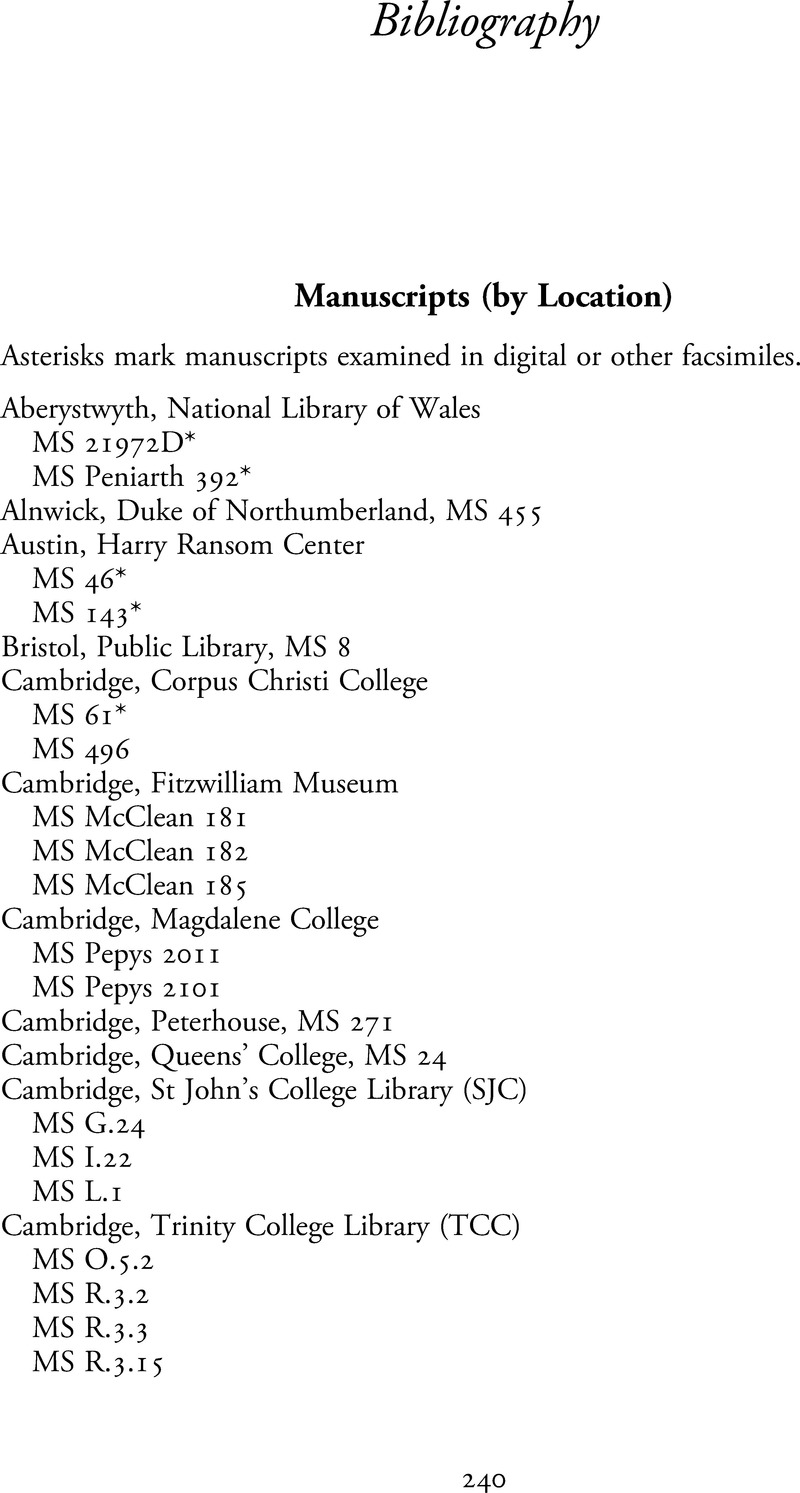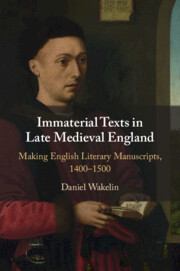Book contents
- Immaterial Texts in Late Medieval England
- Immaterial Texts in Late Medieval England
- Copyright page
- Epigraph
- Contents
- Figures
- Acknowledgements
- Abbreviations, Quotations and References
- Chapter 1 Prologue
- Chapter 2 ‘Hele alle maner of schabbis’
- Chapter 3 ‘Who by prudence Rule him shal’
- Chapter 4 ‘Þe leef torned’
- Chapter 5 ‘Rede … and ʒe may se’
- Chapter 6 ‘This is the copy’
- Chapter 7 Conclusions
- Bibliography
- List of Manuscripts
- General Index
- References
Bibliography
Published online by Cambridge University Press: 12 May 2022
- Immaterial Texts in Late Medieval England
- Immaterial Texts in Late Medieval England
- Copyright page
- Epigraph
- Contents
- Figures
- Acknowledgements
- Abbreviations, Quotations and References
- Chapter 1 Prologue
- Chapter 2 ‘Hele alle maner of schabbis’
- Chapter 3 ‘Who by prudence Rule him shal’
- Chapter 4 ‘Þe leef torned’
- Chapter 5 ‘Rede … and ʒe may se’
- Chapter 6 ‘This is the copy’
- Chapter 7 Conclusions
- Bibliography
- List of Manuscripts
- General Index
- References
Summary

- Type
- Chapter
- Information
- Immaterial Texts in Late Medieval EnglandMaking English Literary Manuscripts, 1400–1500, pp. 240 - 273Publisher: Cambridge University PressPrint publication year: 2022



